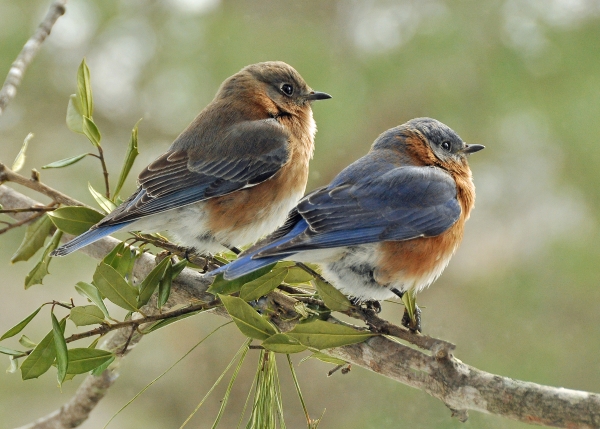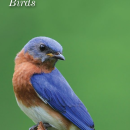
The National Conservation Training Center’s 530 acres of fields, forest and river frontage makes it an excellent location for bird watching all year round. A NCTC bird checklist and binoculars are available to guests at the Front Desk.
NCTC manages its old fields with fire to maintain grassland bird habitat. Our mature deciduous forest is being augmented by diverse tree plantings in former pastures to increase habitat for nesting interior forest birds. Invasive exotic species of herbaceous vegetation, shrubs and trees are strictly controlled to favor native vegetation. As a result, NCTC supports a robust and diverse bird community in all seasons with new species identified almost every year.
Most of the most birds of the lower Shenandoah Valley can all be found here. Probably the most ubiquitous songbirds on the NCTC campus are the Northern Cardinal, Carolina Wren, American Robin, Northern Mockingbird, Red-bellied Woodpecker, Chipping Sparrow and Blue Jay. Our grasslands support abundant breeding Field and Grasshopper Sparrows, and our ponds support breeding Red-winged Blackbirds and Green Herons.
The NCTC Bridge with its mature tulip poplar, maple, oak, and hickory forest is a great place to hear breeding forest interior species such as the Wood Thrush, Red-eyed Vireo, Scarlet Tanager, Acadian Flycatcher, and Pileated Woodpecker. Our combination of woodland and old fields means we have abundant breeding Gray Catbirds, Baltimore and Orchard Orioles, Eastern Wood-pewees, and Great-crested Flycatchers and prominent raptors including Red-shouldered Hawks and Barred Owls. Nest boxes on campus are used by breeding Eastern Bluebirds, Tree Swallows, House Wrens and Carolina Chickadees. Our 1 ½ mile of river frontage along the Potomac makes it a great place to view Bald Eagles who have been nesting at NCTC for over 15 years (see the NCTC Eagle Cam).




